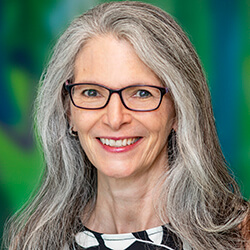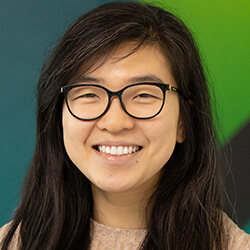Craniofacial Orthodontics
Contact Craniofacial Orthodontics
How can craniofacial orthodontics help my child?
Some conditions of the head and face affect how a child’s teeth, jaws, and facial bones form. The position of their bite may be affected. They may have problems with speech resulting from their jaw positions, as well.
Throughout childhood, our pediatric dentists and craniofacial orthodontists check how your child’s teeth and jaws are developing. The orthodontists work with oral surgeons, craniofacial plastic surgeons and speech and language pathologists (SLPs) ⎼ and with you ⎼ to plan and carry out treatments your child might need.
We coordinate dental and orthodontic needs with other treatments to get the best results. We also work with dentists and orthodontists in the community to fit the needs of patients who live outside the Seattle area.
Why choose Seattle Children's?
Very few orthodontists have special training or experience to treat children with craniofacial conditions. Our orthodontists are experienced in planning and carrying out treatments that affect the entire face, not just the jaws and bite.
They have years of experience in treating conditions from isolated cleft palate to complex syndromes that affect the shape of the face. Seattle Children’s has experts in every field your child needs. Fifty specialists work together to diagnose and create a personalized plan of care for each child. This team approach sets us apart from other centers.
Services We Provide
-
Care for the teeth
Our pediatric dentists evaluate the health of your child's mouth, starting very early in life. When your child needs dental treatment, Seattle Children’s Dental Clinic may do the work, or our Craniofacial team may consult with your child's own dentist.
Care of your child’s teeth is important, starting with their baby teeth. Some craniofacial conditions make children more likely to have dental problems. Depending on your child’s condition, they may have teeth that are misshaped, crowded or missing. The hard coating on their teeth (enamel) may be weak, putting them at risk for cavities.
Healthy teeth are especially important for children with craniofacial conditions. The teeth support orthodontic appliances that are part of your child’s treatment.
-
Fewer and more effective surgeries
In some cases, orthodontic work beforehand can reduce the amount of surgery your child needs. One example is nasoalveolar molding before surgery for cleft lip. The goal of molding is to make the gap in the gums and lip smaller before your baby’s cleft lip surgery. This helps achieve the best result possible during your child’s cleft lip repair. A better result with the first surgery can mean fewer surgeries later in childhood.
Orthodontic treatment can also prepare your child for surgery on their upper jaw (alveolar bone graft), if needed. Often an orthodontist will use an orthodontic appliance to better align the part of the jaw that holds teeth. The bone has a more normal shape when it is time for surgery.
-
Planning midface surgery and improving results
Surgery on the bones in the face is often part of the treatment for complex craniofacial conditions. These include Apert syndrome, Crouzon syndrome, craniofacial microsomia, Treacher Collins syndrome, Robin sequence and Saethre-Chotzen syndrome. Moving the bones in your child’s face can improve how they breathe, chew and look.
Weeks before the surgery, a craniofacial surgical orthodontist helps plan the procedure.
The orthodontist uses 3-D imaging and advanced software to build maps of your child’s face and skull. The software uses your child’s age and predicts how different parts of their face are likely to grow over time to help plan the surgery. Planning for future growth reduces how much surgery your child might need over the years.
The imaging technology helps the orthodontist figure out the best position for the cheekbones, nose, and the soft tissues of the face. This tells the orthodontist and craniofacial surgeon how much to move the jaw and facial bones ⎼ and in which directions. Moving the jaw improves the position of the teeth and bite.
Seeing an image of the expected results for their child helps many families decide about treatments.

A. Before: Crouzon syndrome caused bones in the middle of this girl’s face to grow less than her lower jaw. This affected her breathing, chewing, and appearance.
B. Planning: Using advanced imaging and software, the orthodontist created a simulation of how the girl would look after treatment. The detailed plan guided the surgeon in moving the cheekbones and jaw the right distances and directions.
C. After: After surgery and distraction osteogenesis, this girl’s face has more normal proportions. Her eyes are protected, breathing is improved, and teeth fit together better.
Often, treatment to enlarge bones includes distraction osteogenesis after surgery. At regular visits to Seattle Children’s, your child’s orthodontist and surgeon check the movement and growth of bones in your child’s face. They adjust the tension on the distractor or the direction of the pull to get the best result.
-
Correcting the bite and aligning teeth
Some craniofacial conditions affect the growth and position of your child’s jaws. Your child may need surgery on their upper jaw (Le Fort I procedure) or lower jaw (mandible advancement) to help correct their bite.
Your child’s orthodontist will use braces or appliances to put the teeth in the best position before surgery. After your child’s jaws are moved, their teeth and jaws fit together better.
After surgery on the jaw, your child will wear braces until their teeth settle into their new position. This takes at least 6 months.
-
Treating speech problems
Some craniofacial conditions can make it difficult for your child to talk (speech problems). Cleft palate is one example.
Some children benefit from a custom-made speech appliance called an obturator. It looks like a dental retainer with a small bulb at the back. A dentist with special training makes the obturator to fit your child.
Who is on the craniofacial orthodontics team?
For many children, a craniofacial orthodontist is a key part of their team. We work with other team members to plan and carry out treatments for your child.
Contact Us
To make an appointment, you or your child’s doctor can call the Craniofacial Center at 206-987-2208.
We encourage you to talk with your primary care provider about coming to Seattle Children’s specialists. This helps coordinate your care.
For providers, please see how to refer a patient.


